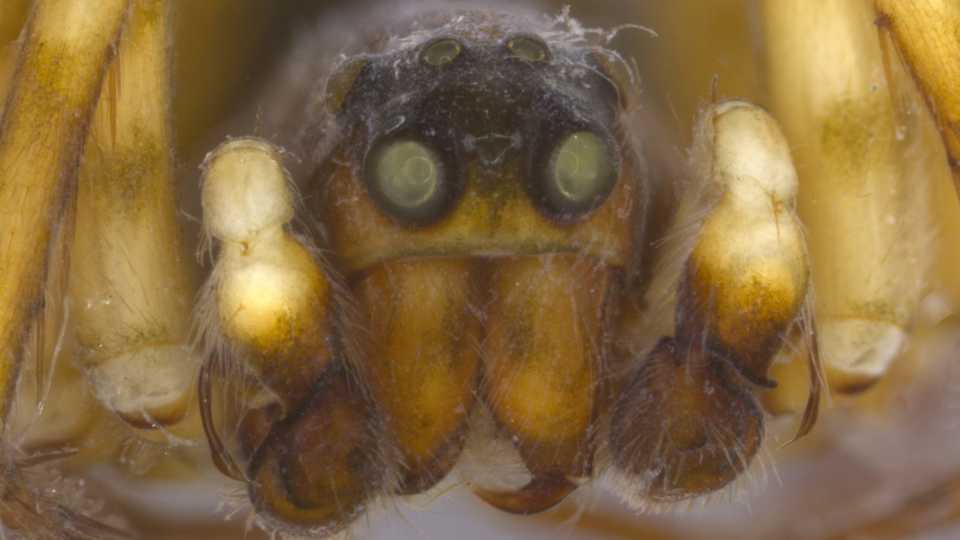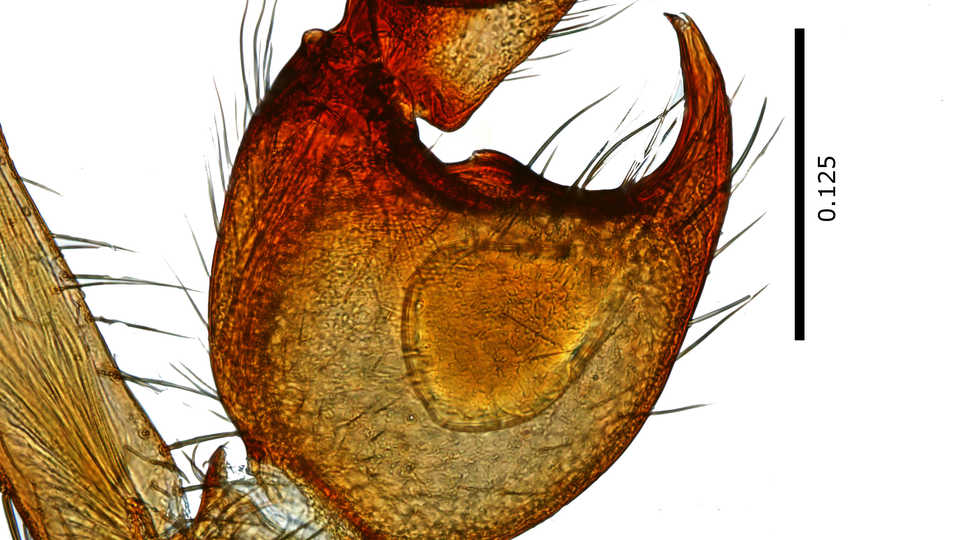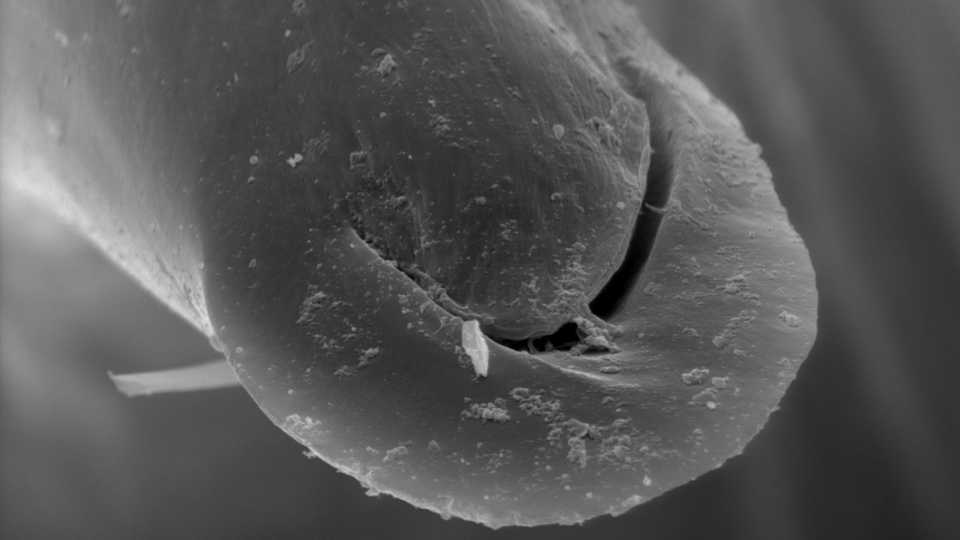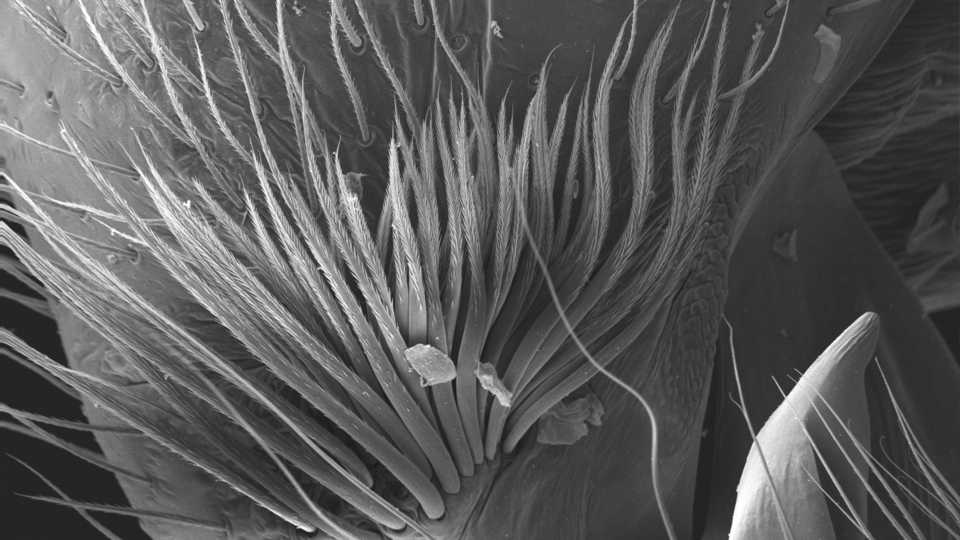Science News
Musical Spiders with Special Features
Sometimes the smallest creatures on Earth tell the biggest stories of our planet. Take the subfamily of spiders that Academy postdoctoral fellow Lina Almeida studies. The Macrobuninae subfamily which is part of the family Amaurobiidae are found in the southern hemisphere—South America and Southern Africa.
What makes these spiders so special? Well, it might make you blush… These arachnids differ from their spidery brethren because of their genitals. The males have very specific features that set them apart, Almeida says. “One of those special features is the presence of a gland on the tibia of the male palp. [The palp is used to transfer sperm to the female.] There is no record of this feature in any other groups of spiders. And looking at a scanning electron microscopy image we can see that there is an opening at the tip of the dorsal tibial projection. We can speculate that this feature is related with the mating behavior and probably produces some kind of pheromones because it only appears in the male adult spider, but only future studies can confirm our suspicion.
“Another interesting feature observed in the male genitalia of this group is the presence of brushes and spines,” she continues. “This is also a new discovery and its real function will only be understood with the study of the behavior of live specimens. The final unique feature is a pair of structures that when rubbed against each other are expected to produce vibrations.” The researchers speculate that these vibrations can also probably be used for sexual communication.
The mysterious lengths males will go to woo a mate…
Another thing that makes these spiders so special is their evolutionary relationships. Many of these spiders are more closely related to species found on other continents then they are to species living on their own continent. This has been the bulk of Almeida’s work—determining these spiders’ relationships and in general their identification. She started studying spiders in her native Salvador da Bahia, Brazil, as an undergraduate, realizing that there was little information on the identification of the spiders that lived in her neighborhood and the rainforest just beyond. And she’s been busy ever since, with many spiders still needing description and publication. “I found 13 new genera and almost 100 new species,” Almeida explains. “This material is being described and it will be the base for many studies involving this group.”
And it’s their evolutionary relationships that tell the bigger story of our planet. For this family of spiders, “diversification may have occurred before the continents drifted apart,” Almeida says, referring to the land mass of Gondwana, the supercontinent that existed on our planet 510 to 180 million years ago and later broke up into the southern continents of South America, Africa, Australia, and Antarctica. “Even small spiders can provide evidence for large scale events that happened millions of years ago, such as continental drift.”
Last month, Almeida and her colleagues published the description of a new species from this extraordinary group of spiders, discovered in southern Chile. Its name is Emmenomma joshuabelli, named after famed violinist Joshua Bell, (who is playing with the San Francisco Symphony for several evenings, beginning tonight!). Almeida explains: “I grew up playing violin. I started at the age of 12, and Joshua Bell has always been an inspiration for me even after I became a biologist. Also, the male spiders of the subfamily Macrobuninae (which includes Emmenomma joshuabelli) have a stridulatory apparatus, which is meant to produce vibrations allowing these spiders to communicate with each other. Usually vibrations are translated into sound to be studied. We are very curious to know what kind of ‘music’ these spiders play and this will be the next step on our research.”
Images, Lina Almeida: Joshua Bell spider, palp and gland, close-up palp, brushes



